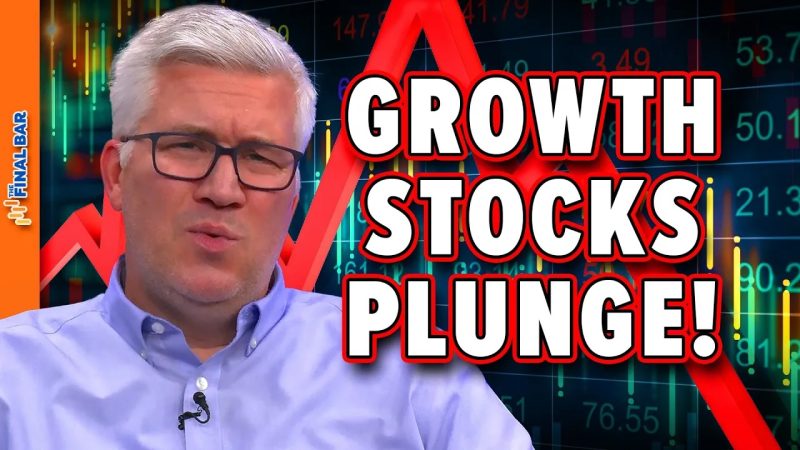The recent events in the stock market have left many investors puzzled as the S&P 500 index broke a key trendline, signaling a potential shift in market sentiment. This trendline, which had been acting as a support level for the index, was decisively breached as growth stocks plunged, leading to sell-offs across various sectors.
The S&P 500, a widely followed barometer of the US stock market, had been on a continuous uptrend for several months, driven by an optimistic outlook on economic recovery and robust corporate earnings. However, the sudden downturn in growth stocks rattled investors, sparking concerns about a broader market correction.
One of the primary reasons behind the sell-off in growth stocks was the rising bond yields. As bond yields surged higher, investors began rotating out of high-growth tech and other sectors that had benefited from low-interest rates. The shift in investor focus towards value stocks and sectors that are more sensitive to interest rate movements added to the selling pressure on growth stocks.
Another factor that contributed to the plunge in growth stocks was the renewed concerns about inflation. As economic activity picks up and pent-up demand fuels consumer spending, there are worries that inflation could accelerate beyond the Federal Reserve’s target levels. This has led to speculation that the Fed might have to tighten its monetary policy sooner than expected, further dampening the prospects for high-growth companies.
The sell-off in growth stocks also highlighted the fragility of market sentiment, which had largely been driven by momentum and speculation in recent months. Many high-flying tech stocks that had seen astronomical gains in the past year experienced sharp pullbacks, as investors reassessed their valuations and risk profiles.
In light of these developments, investors are now closely watching key technical levels and market indicators for signs of further weakness or a potential recovery. The breaking of the key trendline on the S&P 500 has raised concerns about a broader market correction, prompting many investors to reevaluate their portfolios and risk exposure.
While the short-term outlook for growth stocks remains uncertain, some analysts believe that the recent pullback could present buying opportunities for long-term investors. Companies with strong fundamentals and sustainable growth prospects may emerge as winners once the dust settles, providing attractive entry points for investors looking to capitalize on the market turbulence.
In conclusion, the recent sell-off in growth stocks and the breach of the key trendline on the S&P 500 have underscored the fragility of market sentiment and the challenges facing investors in navigating volatile market conditions. While the road ahead may be bumpy, staying focused on long-term investment goals and fundamental analysis can help investors weather the storm and uncover potential opportunities amidst the turbulence. As always, it is essential for investors to maintain a diversified portfolio and stay informed about market developments to make well-informed investment decisions.

